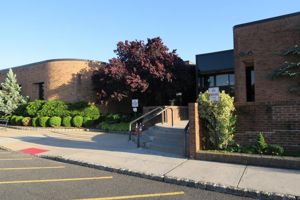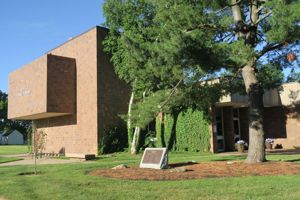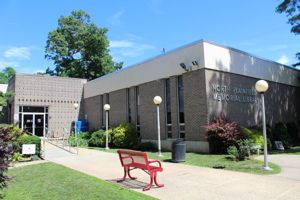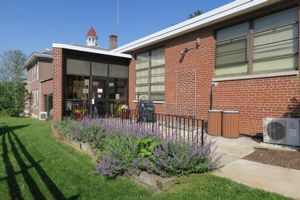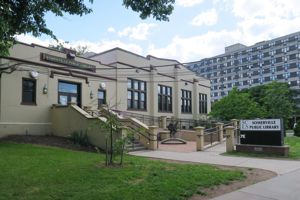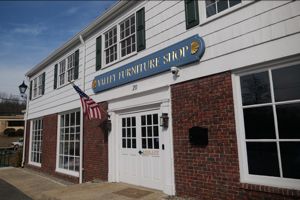Discover Your Inner Poet during National Poetry Month
Created by Bob Helmbrecht, collection development librarian
National Poetry Month isn't just a time to read poetry. It's a great time to try your hand at writing it! Have you ever had an idea for a poem or had the urge to write, but didn't know where to start?
The Library has many books on creative writing, including writing poetry. Here are a few good ones to get you started, and learn how to release your inner poet. Check out some of these books, get writing, and someday we may have your book in our collection!
"The Creative Writing Coursebook: Forty-Four Authors Share Advice and Exercises for Fiction and Poetry" edited by Julia Bell and Paul Magrs
A fully updated comprehensive guide for improving and practicing your creative writing, this book takes aspiring writers through three stages of essential practice: Gathering - getting started, learning how to keep notes, making observations and using memory; Shaping - looking at structure, point of view, character and setting; and Finishing - being your own critic, joining workshops and finding publishers.
"Healing Through Words" by Rupi Kaur
#1 New York Times bestselling author Rupi Kaur presents guided poetry writing exercises of her own design to help you explore themes of trauma, loss, heartache, love, family, healing, and celebration of the self. "Healing Through Words" is a guided tour on the journey back to the self, a cathartic and mindful exploration through writing. This carefully curated collection of exercises asks only that you be vulnerable and honest, both with yourself and the page.
"How Poems Get Made" by James Longenbach
Each of the twelve chapters of "How Poems Get Made" examines a specific aspect of the poetic medium: diction, syntax, rhythm, echo, figure, repetition, and more. Acclaimed poet and critic James Longenbach shows how a poet may manipulate these most basic elements of diction and syntax to create voice, image, tone, or song, and bring a poem to life. It is the perfect guide both in the classroom and beyond. Longenbach's clear, wise lessons are essential to anyone interested in composing or appreciating a poem.
"How We Do It: Black Writers on Craft, Practice, and Skill" edited by Jericho Brown
An anthology curated by Black writers for the creation and proliferation of Black thought. New and previously published essays and interviews provide encouragement, examples, and templates, and offer lessons on everything from poetic form and plotting a story to the lessons inherent in the act of writing, trial & error, and finding inspiration in the works of others, including those of Toni Morrison, Shakespeare, and Edward P. Jones.
"Real Toads, Imaginary Gardens: On Reading and Writing Poetry Forensically" by Paisley Rekdal
Acclaimed poet and teacher Paisley Rekdal demonstrates how to observe the building blocks of a poem--including its diction, form, imagery, and rhythm--and construct an interpretation of its meaning. Using guided close readings and nearly 40 creative and critical "experiments," this book shows how a poem takes shape through the intersection of all its lyric elements. Drawing on the work of poets from William Shakespeare to Jericho Brown, "Real Toads, Imaginary Gardens" reveals how to read and write critically, and how to appreciate--and achieve--the exhilarating craft of poetry.
"Singing School: Learning to Write (And Read) Poetry by Studying With the Masters" by Robert Pinsky
A bold new approach to writing (and reading) poetry based on great poetry of the past. This former poet laureate provides introductions and sidebar notes for more than eighty poems by greats including William Butler Yeats, Emily Dickinson, and George Herbert, in an effort to spark pleasure in reading and writing poems.
"Write a Poem, Save Your Life: A Guide for Teens, Teachers, and Writers of All Ages" by Meredith Heller
This book helps writers of all ages and experience levels navigate their way through all aspects of life. With writing prompts, tools, encouragement, and moving student examples, Meredith Heller gently guides us in the art of using poetry to figure out who we are and what matters to us and to heal the deeper issues many of us face, such as depression, addiction, health and body image issues, low self-esteem, trauma, gender and sexual identity issues, and home and family problems. Along the way, we learn that writing poems helps us believe in ourselves, make positive life choices, and find direction, purpose, and meaning.
"Writing Poetry in the Dark" edited by Stephanie M. Wytovich
"Writing Poetry in the Dark" brings together some of the most successful contemporary genre poets to discuss topics related to creating dark and fantastical poetry. Included are recommendations on how to bring fear to the page, write from the wound, let violence loose, channel the weird, and tackle the dark side of daily life. There are also practical suggestions for exploring different poetic forms and topics ranging from building worlds, writing from different points of view, and exploring gender and sexuality on the page. This book will bring something different to every speculative writer who is interested in exploring poetry with a genre twist.
